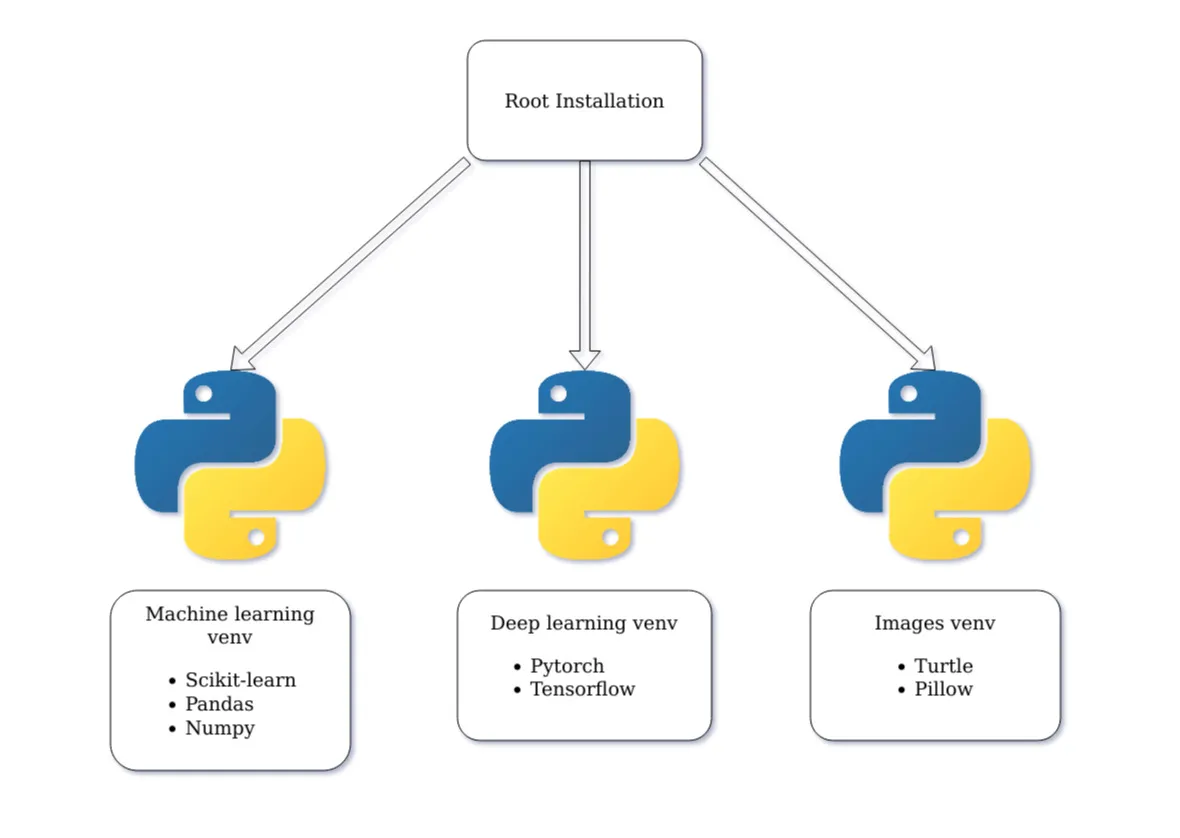What are virtual environments in Python and how to work with them
Understand why virtual environments are required and how to manage them.
Python has robust support for third-party libraries. Instead of writing code themselves, users can install already built solutions using pip (a package management tool for Python). Although this ability to easily integrate foreign packages gives Python a superpower, managing the packages and their versions can quickly turn into a mess.
#more
Using virtual environments users can manage libraries without conflicting with other installations. In this article, we will dive deeper into using venv for virtual environment management in Python.
What are virtual environments?¶
Every Python installation creates root site-directories, which means there is always one environment that can be used system-wide. Different projects have different requirements and therefore using the root Python installation will lead to frequent Install/Uninstall of packages. This creates a lot of friction while working and wastes time and effort.

Virtual environments aim to isolate the Python execution and the dependency environment from the root environment. Using this tool users can use different environments for different projects with zero conflicts. There can be different versions of a package installed in two different virtual environments.
venv is a standard Python package that is used to create virtual environments.
How does venv work?¶
Every virtual environment has its own Python binary which is a copy of the Python version used during creation. A pyvenv.cfg file is created in the environment directory specifying information about the environment such as the path to Python which was used for creation, its version, and whether packages installed in system Python are copied.
On virtual environment activation, venv prepends the path to the virtual environment binary, like /home/user/Desktop/my_env/bin/, to the PATH system variable. When a script is executed it refers to the virtual environment Python binary files rather than system Python binaries.
Working with virtual environments¶
Creation¶
The following command is used to create a virtual environment:
$ python3 -m venv /path/to/new/virtual/environment
For example, using the following will create a virtual environment with the name venv in the current working directory:
$ python3 -m venv venv
Activation¶
Depending on your specific OS and shell type, commands can slightly differ. A full list with all activation commands can be found here.
The two most common commands for macOS/Linux and Windows are listed below. Replace \<venv> with the path to virtual environment:
macOS/Linux:¶
$ . <venv>/bin/activate
or
$ source <venv>/bin/activate
Windows:¶
$ <venv>\Scripts\activate.bat
Deactivation¶
A virtual environment can be deactivated, irrespective of OS and shell type, using the following command
$ deactivate
Deletion¶
To delete a virtual environment simply delete the virtual environment folder. Either manually or in the console, e.g.:
$ rm -rf venv
FREE VS Code / PyCharm Extensions I Use
✅ Write cleaner code with Sourcery, instant refactoring suggestions: Link*
Python Problem-Solving Bootcamp
🚀 Solve 42 programming puzzles over the course of 21 days: Link*